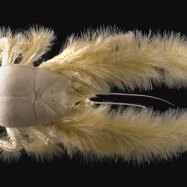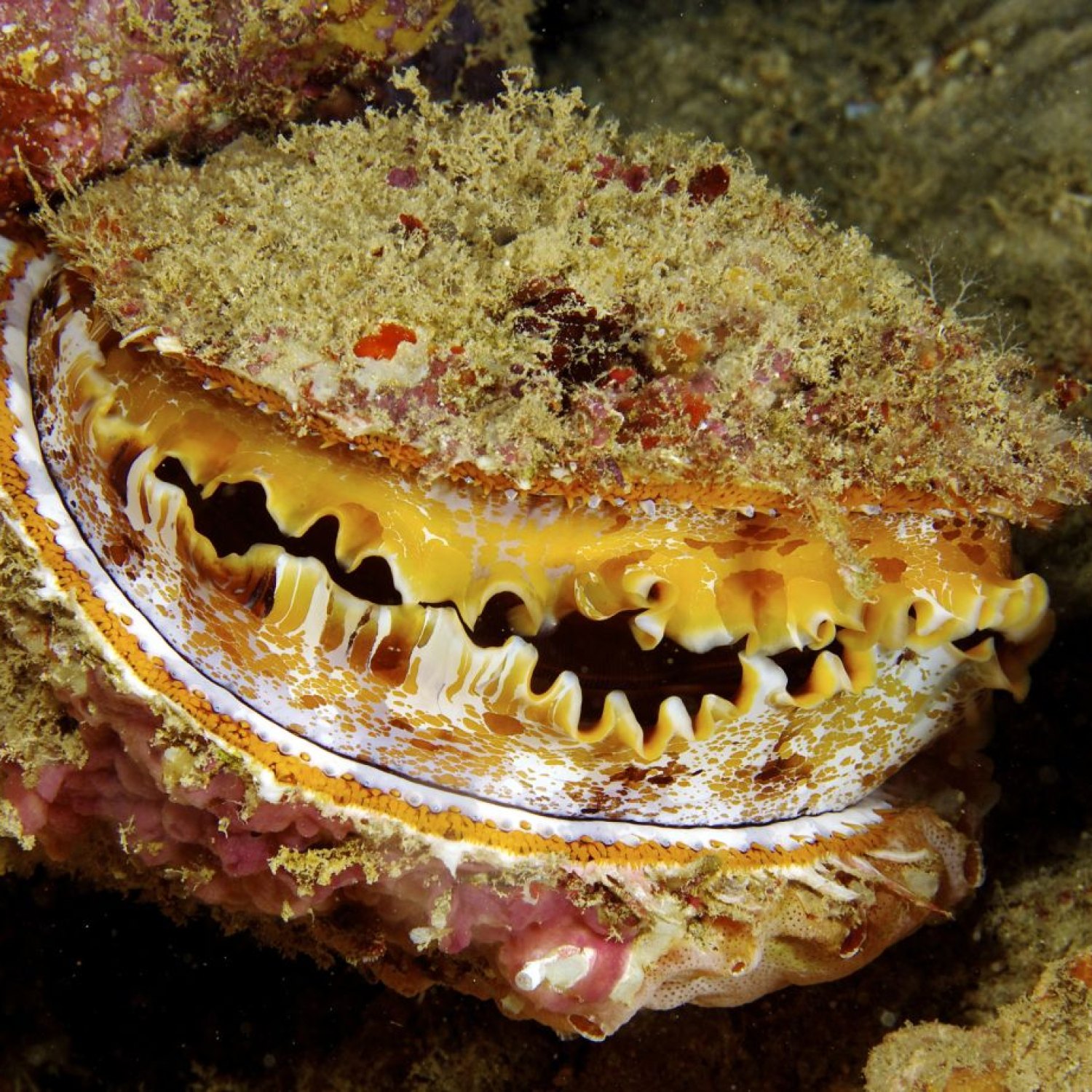
Oyster
Around 7-15 cm (2.8-5.9 inches)
Did you know that oysters, found on the seafloor, estuaries, and rocky substrates, belong to the family Ostreidae? These unique creatures have an irregular oval shell, and can grow up to 7-15 cm in length. Their popularity as a delicacy has led to overharvesting and declining populations in some areas, making them an important species to protect. #oysters #marinebiology #conservation
Animal Details Summary:
Common Name: European oyster
Kingdom: Animalia
Habitat: Marine
The Fascinating World of the European Oyster: A Marine Filter Feeder
The ocean may seem like a vast and mysterious world, but hidden beneath its depths are fascinating creatures waiting to be discovered. One of these intriguing creatures is the European oyster, also known as Ostrea edulis in the science world.Found in coastal areas all over Europe, the European oyster is a member of the Animalia kingdom and belongs to the Phylum Mollusca. They are part of the Bivalvia class, which comprises various types of clams, mussels, and scallops Oyster. They fall under the family Ostreidae and are one of the many oyster species in the world that live in marine environments.
But what makes the European oyster stand out from its bivalve relatives? Let's dive into the details and discover the captivating world of these marine filter feeders.
Appearance and Size
Have you ever seen an oyster shell? If so, you may have noticed that they have an irregular oval shape. This shape provides them with a sturdy and protective home, keeping them safe from predators and harsh sea conditions. European oyster's shells are usually around 7 to 15 cm in length, making them relatively larger compared to other oyster species.But what's interesting about their shells is their coloration. Unlike other oysters, the color of their shells can vary from pale grey to brown. This color variation is thought to be due to the different types of sediments and minerals in the areas where they are found. So, if you come across a European oyster, don't be surprised if its shell looks different from others Olm.
Feeding Habits
As filter feeders, European oysters play a vital role in maintaining the ecological balance of the marine environment. They feed by drawing in seawater and filtering it through their gills, trapping microscopic plankton, algae, and other particles as food. This process not only helps them to survive but also helps in purifying and cleaning the water around them.Filter feeding also aids in keeping the oyster's environment clean, as they can filter up to 50 liters of water per day. This not only benefits them but also contributes to the health of other marine creatures and plants living in the same area.
Habitat and Distribution
Being a marine animal, the European oyster can be found living in various habitats such as seafloors, estuaries, and rocky substrates. They prefer to attach themselves to hard surfaces like rocks, shells, or other oyster shells using byssus threads, a strong and elastic material produced by their feet.European oysters can be found in coastal areas all over Europe, from Iceland and Norway in the north to Portugal in the south. They are also found in the Mediterranean Sea, and some have been introduced to North America and Australia.
Origin and Human Interaction
The European oyster has been an essential food source for humans since ancient times. They were a popular delicacy amongst the ancient Romans and Greeks, and even during the medieval period. It is said that Julius Caesar was a big fan of these oysters and enjoyed them regularly at his lavish banquets.They were also a significant source of income for fishermen and oyster farmers, as well as a symbol of prosperity and luxury during the 19th and 20th centuries. However, with overconsumption and environmental changes, the population of European oysters declined rapidly, leading to their commercial extinction.
But thanks to conservation efforts and strict regulations, the European oyster population has started to make a comeback. Nowadays, they are still considered a delicacy and are being farmed sustainably for human consumption.
Unique Adaptations
Being in the marine environment, European oysters have developed unique adaptations to survive and thrive. One of these adaptations is their ability to change their gender. They are born as males but can change into females later in life, allowing them to maximize their reproductive capabilities.Another interesting adaptation is their ability to survive long periods out of the water. Unlike other oyster species, European oysters can close their shell tightly, keeping moisture inside and preventing themselves from drying out. This allows them to survive during low tide or when exposed to air for longer periods.
Role in the Ecosystem
Apart from being filter feeders, European oysters play a crucial role in the ecosystem. They provide a habitat for other marine creatures, such as small fish and crabs, who take shelter inside their shells. They also create a hard surface for various types of algae and other plants to grow, attracting more biodiversity to their surroundings.Moreover, their filtering abilities help in maintaining the water quality, which is essential for the survival of other marine species.
The Impact of Climate Change
Unfortunately, like many other marine creatures, the European oyster is also facing significant threats due to climate change. The rise in sea temperatures is causing diseases to spread among oyster populations, resulting in mass die-offs. Changes in water salinity, ocean acidification, and sea-level rise are also putting a strain on their survival.Moreover, the increase in the frequency and intensity of storms, hurricanes, and other natural disasters are also damaging their habitats, making it challenging for them to thrive.
Conservation Efforts
To protect this iconic species, efforts are being made to promote sustainable oyster farming practices, such as proper water management and disease prevention. Laws and regulations have also been put in place to govern the fishing and farming of European oysters. This includes monitoring the population size, enforcing quotas, and ensuring the habitats are not overexploited.Additionally, research is being conducted to understand the effects of climate change on these oysters and develop solutions to mitigate these impacts.
Conclusion
In conclusion, the European oyster is a fascinating creature that plays a critical role in the marine ecosystem. From their ability to filter large amounts of water to their unique adaptations and vital role in the food chain, these oysters are truly remarkable.Although they have faced population decline over the years, conservation efforts have shown promising results, and it is essential to continue these efforts to protect and preserve the European oyster for future generations to admire and enjoy. Next time you come across an oyster, take a moment to appreciate the remarkable world of the European oyster and its vital contributions to our oceans.

Oyster
Animal Details Oyster - Scientific Name: Ostrea edulis
- Category: Animals O
- Scientific Name: Ostrea edulis
- Common Name: European oyster
- Kingdom: Animalia
- Phylum: Mollusca
- Class: Bivalvia
- Order: Pterioida
- Family: Ostreidae
- Habitat: Marine
- Feeding Method: Filter feeder
- Geographical Distribution: Coastal areas in Europe
- Country of Origin: Europe
- Location: Seafloor, estuaries, and rocky substrates
- Animal Coloration: Variable, usually pale grey or brown
- Body Shape: Irregular oval shell
- Length: Around 7-15 cm (2.8-5.9 inches)
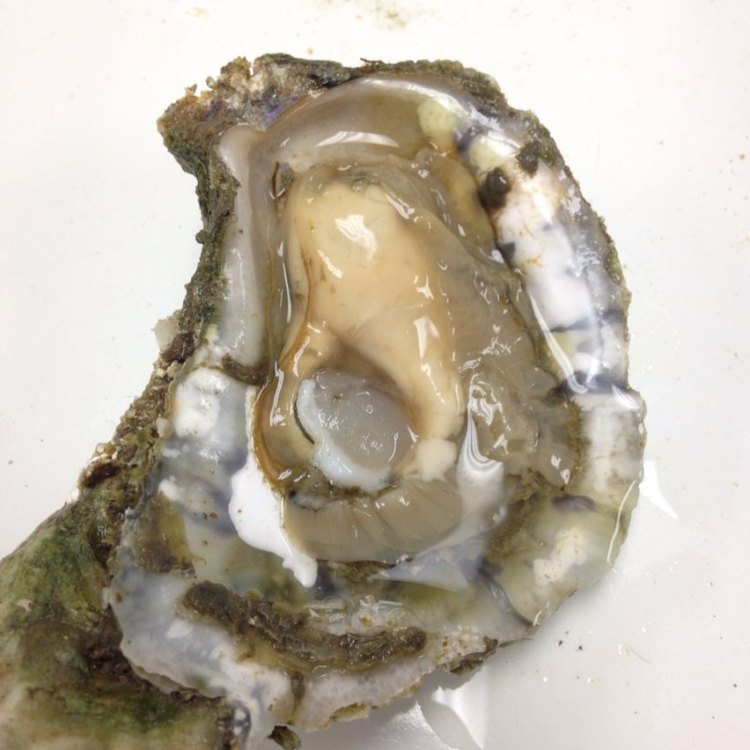
European oyster
- Adult Size: Varying sizes, but typically 7-15 cm (2.8-5.9 inches)
- Average Lifespan: Up to 20 years
- Reproduction: Sexual
- Reproductive Behavior: External fertilization
- Sound or Call: No sound production
- Migration Pattern: Sessile (non-migratory)
- Social Groups: Clumping together into dense aggregations (oyster reefs)
- Behavior: Filter feeding, attaching to substrates
- Threats: Overfishing, habitat loss, pollution
- Conservation Status: Vulnerable
- Impact on Ecosystem: Oyster reefs provide valuable ecosystems
- Human Use: Commercial harvesting, aquaculture
- Distinctive Features: Thick, rough shell with radial ridges
- Interesting Facts: Oysters can change their sex during their lifespan
- Predator: Crabs, starfish, birds, humans
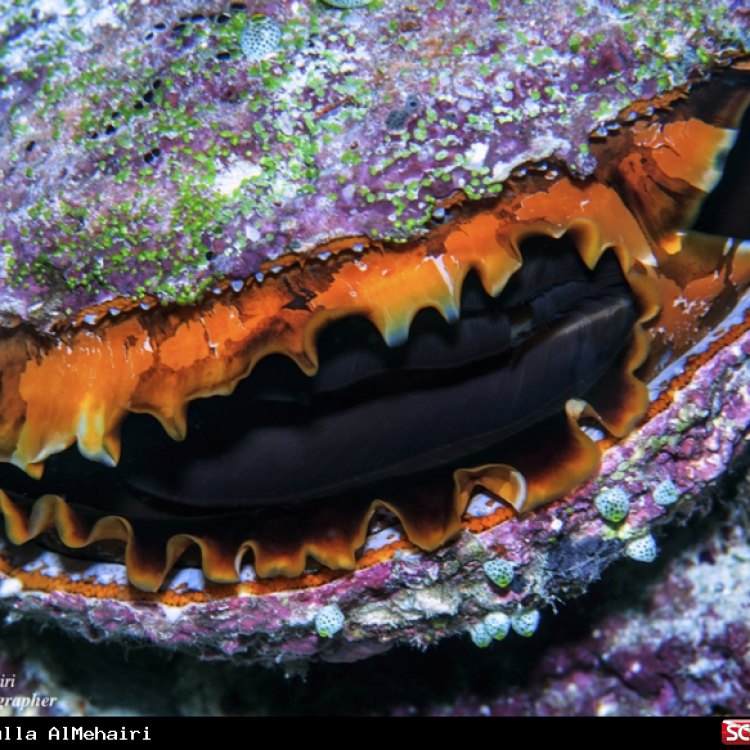
Ostrea edulis
Discovering the Wonder of Oysters: Hidden Treasures of the Ocean
The ocean is a vast, mysterious world, filled with a myriad of creatures that never cease to amaze us. Amongst these creatures lies a species that may seem simple, but is actually one of the most fascinating and important in maintaining the balance of our underwater ecosystems - oysters. These shelled wonders have caught the attention of scientists and seafood lovers alike, with their unique features, reproductive behavior, and important role in the ecosystem. So, let's dive into the world of oysters and discover the hidden treasures of the ocean PeaceOfAnimals.Com.A Look at the Basics
Oysters, scientifically known as Ostreidae, are a family of bivalve mollusks found in marine and brackish water habitats across the globe. They have a wide range of sizes, with some species growing as large as 30 cm (11.8 inches), while others remain relatively small at just a few centimeters. However, on average, adult oysters measure anywhere from 7 to 15 cm (2.8-5.9 inches) in length and can weigh up to a few pounds.While their sizes may vary, these creatures can live for a surprisingly long time. With proper conditions and care, oysters have an average lifespan of up to 20 years, making them one of the longest-lived bivalves in the ocean. Their long lifespan can be attributed to their hard shell, which provides them with a protective covering against predators and environmental stressors Onagadori Chicken.
The Reproduction and Behavior of Oysters
Oysters are a sexual species, meaning they have separate male and female individuals. They reproduce through a process called external fertilization, where the male oyster releases sperm into the water, and the female oyster filters it into her body to fertilize her eggs.Interestingly, oysters have the ability to change their sex during their lifespan. This process is known as protandry, where oysters start out as males and then transition to females as they mature. This unique reproductive behavior allows oysters to maintain a stable population and increase their chances of survival.
Aside from their reproductive habits, oysters are known for their behavior of clumping together in dense aggregations, forming what is commonly known as "oyster reefs." These reefs may not seem like much, but they play a crucial role in the ocean's ecosystem.
The Importance of Oyster Reefs
Oyster reefs are more than just a pretty sight in the ocean. They provide valuable ecosystems that support a diverse range of marine life. These reefs act as a habitat for a variety of organisms, such as fish, crabs, snails, and other bivalves. They also serve as a natural filtration system, removing pollutants and excess nutrients from the water, which helps maintain the water quality and balance of the ecosystem.But sadly, these natural wonders are facing numerous threats, putting their survival at risk.
The Threats to Oyster Reefs
Like many other ocean creatures, oysters are facing several challenges that threaten their existence. One of the primary threats to oysters is overfishing. Due to their high demand, oyster populations have significantly decreased, with many areas reporting a decline of up to 85%. This not only affects the oyster population but also disrupts the delicate balance of the ecosystem.Another major threat to oysters is habitat loss. Oysters require specific conditions to thrive, such as suitable substrate to attach to and a steady supply of food. However, human activities such as dredging, coastal development, and pollution have destroyed these essential habitats, making it difficult for oysters to survive.
Speaking of pollution, it is also a significant concern for oysters. They are filter feeders, which means they absorb everything in the water around them, including pollutants. This makes them highly susceptible to contamination, which not only affects their health but also the health of other marine organisms.
The Ongoing Efforts on Conservation
Due to their vulnerable status, conservation efforts have been put into place to protect oysters and their reefs. These efforts vary from region to region but generally include measures such as limiting harvesting, enforcing strict fishing regulations, and restoring degraded habitats.Furthermore, oyster farming, also known as aquaculture, has gained popularity as a sustainable way to harvest oysters without impacting wild populations. Oyster farms provide a controlled environment for oysters to grow and reproduce, reducing the strain on wild populations while also meeting the high demand for oysters in the seafood market.
The Human Connection
Aside from their ecological importance, oysters also hold cultural and economic significance to humans. They have been a part of human cuisine for centuries, with various cultures enjoying them in different ways - raw, grilled, fried, or steamed. In fact, oysters are considered a delicacy in many parts of the world and are also a source of income for fishermen and seafood industries.Moreover, oysters have been used for more than just food. Their shells have been used for centuries as a source of calcium for livestock and as material for creating pearls, adding to their value and importance in human culture.
Unique Features of Oysters
One of the most distinctive features of oysters is their thick, rough shell with radial ridges. This shell is composed of two halves, or valves, held together by a hinge, which the oyster can open and close to filter water and feed. The shell is also a vital defense mechanism against predators, as it can quickly snap shut to protect the oyster from harm.Aside from their physical features, oysters also have unique abilities, such as their ability to filter large volumes of water. Oysters can filter up to 50 gallons of water per day, making them an important species in maintaining the health of their ecosystem.
From Predator to Prey
Like any other creature, oysters also have their fair share of predators lurking in the sea. The most common predators of oysters include crabs, starfish, and birds, who use their strong mandibles or beaks to pry open the oyster's shell and feed on its soft tissue. However, humans remain the most significant threat to oysters, with overfishing and habitat destruction impacting their population.The Future of Oysters
The future of oysters may seem uncertain, with the various threats they face. However, with ongoing conservation efforts and sustainable practices such as oyster farming, there is hope for their survival. It is essential for us to understand the crucial role oysters play in maintaining the balance of our ocean's ecosystem and take necessary steps to protect them.In conclusion, oysters are not just another creature in the vast ocean. They are fascinating and unique creatures that provide valuable ecosystems, support human culture and economy, and hold the key to maintaining a healthy ocean. So, next time you encounter these unassuming shelled animals, take a moment to appreciate their beauty and importance in the underwater world.
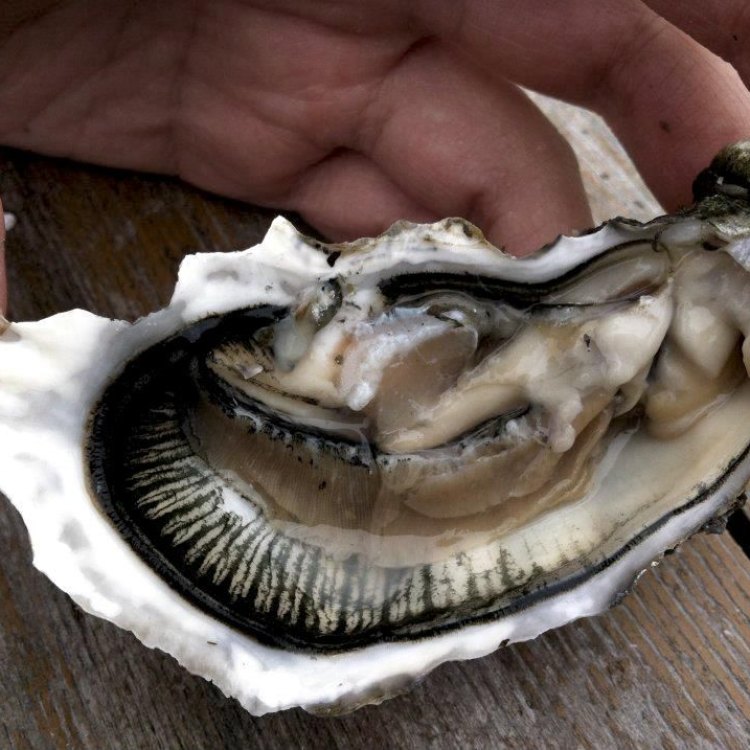
The Fascinating World of the European Oyster: A Marine Filter Feeder
Disclaimer: The content provided is for informational purposes only. We cannot guarantee the accuracy of the information on this page 100%. All information provided here may change without prior notice.












